
Austria
( 1 user review )Austria (German: Österreich, literally "the Eastern Realm" or "Eastern Empire") is a land-locked alpine country in Central Europe bordering Switzerland and Liechtenstein to the west, Germany and Czech Republic to the north, Slovakia and Hungary to the east and Slovenia and Italy to the south. Austria, along with neighboring Switzerland, is the winter sports capital of Europe. However, it is just as popular for summer tourists who visit its historic cities and villages and hike in the magnificent scenery of the alps.
Understand
History
Today's Austria is what was once the German speaking core and center of power for the large multi-ethnic Austro-Hungarian Empire. This empire stretched eastwards from present-day Austria through much of east-central and south-central Europe. It included the entire territories of modern day Hungary, the Czech Republic, Slovakia, Slovenia, Croatia, Bosnia, and portions of Serbia, Romania, Ukraine, Poland and Italy. While Prussia united the German states to the north into one "Germany" in the latter part of the 19th Century, Austria remained oriented eastwards towards its diverse empire. However, from the start of the 20th century, the political history of Austria has been closely linked to the misfortunes and disasters of modern German history, mainly the First and Second World Wars and their terrible aftermath.
The modern republic of Austria came into being in 1918 as a result of its defeat in World War I. In its wake, the empire was split into many components. They included Austria's current borders, independent Hungary, lands given to Italy (South Tyrol and Trentino), lands given to southern Poland (which also came about from lands taken from the Russian and German empires), and independent Czechoslovakia and the northern and western half of Yugoslavia. Following an unresistant invasion and annexation by Nazi Germany in 1938, Austria more or less functioned as a part of Nazi Germany during the Second World War. Thus a large proportion of the population supported Hitler and Austria's incorporation into Germany. Austrian soldiers also fought in the Wehrmacht, cities were bombed heavily by the Allies and concentration camps also existed on Austrian soil (e.g. Mauthausen near Linz). It was not until the end of the war that the mood changed and Austria tried to distance itself from Germany. In 1945, Austria was divided into zones of occupation like Germany. However unlike Germany, Austria was not subject to any further territorial losses. A State Treaty signed in 1955 ended the Allied and Soviet occupation, recognized Austria's independence, and again forbade future unification with Germany. A constitutional law of that same year declared the country's "perpetual neutrality", which was a condition for Soviet military withdrawal, and thus saved Austria from Germany's fate of a divided nation with a divided capital. However, the South Tyrol Question took Austria and Italy to the UN in the post-war era and international brokered mitigation found a suitable solution for both countries by the late 1970's. This official neutrality, once ingrained as part of the Austrian cultural identity, has been called into question since the Soviet Union's collapse of 1991 and Austria's entry into the European Union in 1995. Reexamining its Nazi past is something that has become large scale and accepted as commonplace in the media only relatively recently. Before Austria had sought to portray itself as "Hitler's first victim". A prosperous country, Austria entered the European Monetary Union in 1999, and the Euro currency replaced the Schilling in 2002. Austria is also part of "border-less Europe", resulting in many students from all over the European Union studying in Austrian universities and vice verse. Austria is one of the most popular summer and winter holiday destinations in Europe and has the tourist industry to match it!
Culture
Like its closely related neighbor Germany, Austria is a federation. Each of its nine federal states has a unique and distinct culture.
Austrians aren't easy to categorize. In fact, the only reason Austrians stand out from their European neighbors is that they don't stand out from the rest for anything in particular. Austrians are moderate in their outlook and behaviour. Being at Europe's crossroads, their culture is influenced from several sides. The stereotype of the yodeling, thigh slapping, beer-swilling xenophobe may apply to a few individuals but it certainly doesn't apply to the majority of Austrians.
The average Austrian on the street is likely to be friendly yet somewhat reserved and formal, softly spoken and well mannered, law abiding, socially conservative, rooted, family oriented, conformist and somewhat nepotistic, a Catholic at heart, not particularly religious but a follower of tradition, well educated if not as cosmopolitan as his/her European cousins, cynical, and equipped with a dry, sarcastic sense of humor.
Many Austrians derive their identity from their Bundesland, or province. For instance, the typical inhabitant of Carinthia would say he/she is Carinthian first and Austrian second. Hence, patriotism concerning the nation as a whole is seldom shown and foreigners are often disturbed by the lack of enthusiasm that can be observed e.g. on national holiday. The fact, that Austrians dislike demonstrations of national identity, can however also be explained partly by the historical experiences Austria has made during the Third Reich, since due to the horrors of that time some bad taste will always adhere to any manifestation of national pride.
Most Austrians like to enjoy the good life. They spend a lot of time eating, drinking and having a good time with friends in a cozy environment, and are therefore very hospitable. Members of the older generation can be conservative in the sense that they frown upon extremes of any shape and form and, in general, are averse to change. They enjoy one of the highest living standards in the world and want to keep it that way.
Austria doesn't have a well defined class system. However, cultural differences between the urban and rural populations can be huge. Culture also varies from region to region, but to a lesser extent. As a very general rule, the further to the West the location and the more rural the environment, the more socially conservative people become.
Due to the lack of overall patriotism and the commonness of regional identity, Austrians as a big entity like to define themselves merely by what they are not. It's important to stress that Austrians are not Germans, even though German is the official and universal language. Arguably, Southern Germany and Bavaria in particular is a close cultural relative of Austria in many ways. You may not even notice harsh changes at all in people's accent and appearance when crossing the border between the two countries. Likewise, South Tyrol in northern Italy, with its Austrian history is culturally very similar. But Northern and Eastern Germany (north of the Main River) are a different world altogether and in some aspects no more similar to Austria than, say, its southerly neighbor Italy! While the common language may appear the same on paper, in spoken word its not and the cultural divide between the northern German speaking world and the alpine region is large. It is perhaps this that makes Austrians think in a collective sense that they are very proud to hold on to regional tradtions and boast of what they are not, mainly German! Whatever the similarities and differences between Austria and Germany may be, comparisons will not be appreciated by Austrians, neither will the use of terms like "German", "Teutonic" or "Germanic" for things that are Austrian. Certainly, Austria and Germany are sister nations and enjoy warm relations but case in point, Mozart was Austrian, or a Salzburger for the record, not German!
Politics
Austria is a parliamentarian, federal republic consisting of nine federal states (see list above). The official head of the state is the federal president (Bundespräsident), who is elected directly by the people for a term of six years. His/her function is mainly representative, however, and the federal chancellor (Bundeskanzler), appointed by the president, runs most of the day-to-day politics.
The Austrian parliament consists of two chambers, the Nationalrat (National Council) with 183 members as the main chamber and the Bundesrat (Federal Council). Whereas the members of the National Council are elected every four years by popular vote, the 62 members of the Federal Council are elected by each of the legislatures of the states of Austria for 4- to 6-year terms. The composition of the Bundesrat changes after every election to a state's Landtag (State Parliament). The Austrian constitution provides the Bundesrat with the right to veto legislation passed by the National Council; in most cases this is only a suspensive veto, meaning the National Council can override it by passing the law again.
There are five major parties in Austria: The social democrats (SPÖ), the (conservative) Austrian people's party (ÖVP), the (right-wing) freedom party (FPÖ) which recently split into two parties (FPÖ and the alliance for the future of Austria BZÖ) and the (leftist) Green Party. The current government consists of a coalition of SPÖ and ÖVP.
Geography
Contrary to popular perceptions, Austria is not all about mountains. While the Alps do cover 3/4 of the country dominating the provinces of Vorarlberg, Tyrol, Salzburg, Styria, Upper Austria and Carinthia, the eastern provinces of Lower Austria, the Burgenland and the federal capital of Vienna are more similar to the geography of the neighboring Czech Republic and Hungary. This diverse mix of landscapes is packed into a relatively small area of size. Glaciers, meadows, alpine valleys, wooded foothills, gently rolling farmland, vineyards, river gorges, plains and even semi-arid steppes can be found in Austria.
One quarter of Austria's population lives in Greater Vienna, a European metropolis, located where the Danube meets the easternmost fringe of the Alps, not far from the border with Slovakia and its capital Bratislava.
Virtually all government, financial and cultural institutions, as well as national media and large corporations are based in Vienna, due largely to history and geography. Thus, the capital dominates Austria's cultural and political life and is clearly a world unto its own. It has little to do with the rest of mainly rural Austria and outside of Graz and Linz there really are no other large scale cities in the country. There is a playful joke told in Vorarlberg province regarding the dominance of Vienna regarding national affairs that reads, "the people of western Austria make the money and Vienna spends it."
Climate
Austria has a temperate continental climate. Summers last from early June to mid-September and can be hot in some years and rainy in others. Day-time temperatures in July and August are around 25° C (77° F), but can often reach 35° C (95° F). Winters are cold in the lowlands and very harsh in the Alpine region with temperatures often dropping below -10° C (14° F). Winters last from December to March (longer at higher altitudes). In the Alpine region large temperature fluctuations occur all year round and nights are chilly even in high summer. The northern Alps are generally a lot wetter than the rest of the country. The South East (Styria and Carinthia) is dry and sunny. The area around Vienna often experiences strong easterly winds.
Electricity
Electricity is supplied at 220 to 230V 50Hz. Outlets are the European standard CEE-7/7 "Schukostecker" or "Schuko" or the compatible, but non-grounded, CEE-7/16 "Europlug" types. Generally speaking, U.S. and Canadian travelers should pack an adapter and a converter for these outlets if they plan to use North American electrical equipment in Austria.
Regions
Austria is a federal republic comprised of nine federal-states:
-
-
-
-
-
-
-
-
-
-
-
-
-
-
-
-
-
-
Other destinations
-
Zell am See - one of the most important alpine tourist towns in Austria (Europa Sport Region)
-
Kaprun - part of the Europa Sport Region
-
Wörthersee - one of Austria's warmest lakes
-
Bodensee - a big lake situated in Vorarlberg and shared with Switzerland and Germany
-
St. Anton - a popular ski resort in Austria on the Vorarlberg-Tyrolian border
-
Pinswang - one of the most ancient settlements of the North Tirolean Ausserfern, on the border with Bavaria and a short walk or drive to King Ludwig's castles Pinswang
Contact
Calling Austria
International code is +43. From the UK Austria can be called at local rate by dialing 0845 2442442 followed by the phone number.
When calling Austria from abroad, if the number starts with the city code 0222, it's in Vienna. Drop all four of those digits and replace it with a 1, then dial the remaining digits of the phone number. 0222 was the former dialing prefix for Vienna. It should be replaced by 1 also for domestic calls to Vienna.
If the number doesn't start with 0222, simply drop the initial zero from the city code and dial the remaining digits.
Phones
Public phones are available in postal offices. Phone boxes are getting rare (and exchanged by boxes with internet access) since the use of cell phones got very popular over the last years. Phone boxes usually operate with prepaid cards which can be obtained from postal offices and kiosks (German:Trafik).
Phone numbers have an area code followed by the phone number itself. Mobile phone numbers use the prefix 0650, 0660, 0664, 0676, 0699, 0680, 0681 or 0688. Toll-free numbers are denoted by 0800, service lines priced like local calls are setting off with 0810 whereas numbers starting with 0900, 0901, 0930 or 0931 are expensive service lines charging up to 3,63€ per minute.
To enjoy cheap international calls from Austria you can use low-cost dial-around services such as pennyphone , austriaphone or fuchstarife . Dial-around services are directly available from any landline in Austria. No contract, no registration is required. Most dial-around services offer USA, Canada, Western Europe and many other countries at the price of a local call so you can save on your phone expenses easily. They also work from public payphones.
Cell phones
Austria has a perfect GSM and 3G (UMTS) network coverage of nearly 100%. If you bring your own cell phone with you assure yourself that it operates on 900MHz / 1800MHz (GSM) or 2100Mhz (3G WCDMA). There are cell phones that operate at 1900MHz (e.g. networks in the United States) which are not supported in Austria. If you plan a longer visit in Austria it might be useful to buy a new mobile with a prepaid card from a local cell phone network provider. Be aware that some remote areas (especially mountainous areas) do not have network coverage yet, though this rather the exception than the rule. Even the Vienna underground lines do have perfect coverage.
Despite being a rather small country, Austria has a large number of cell network providers including A1, T-Mobile, Orange (former called One) , Drei (3G), Telering, Tele2, Bob and Yesss.
The probably cheapest prepaid mobile providers right now are Bob and Yesss . A prepaid card costs €13 including 60 minutes talking time. Then you pay 6.8 cent per minute to all Austrian networks (as of June 2008) and 70 cents to the most important other countries. The Yesss SIM card is only available at the discounter Hofer . Yesss also sells cheap UMTS data cards (that are different from the normal SIM cards). The starter kit includes 1GB traffic and is available for 20 Euro. In order to prevent the SIM card from expiring, you need to recharge it once per year.
If you have an Austrian bank account, you can purchase a registered (non-prepaid) Bob SIM card. Calls then only cost 4 cent per minute to all other Austrian networks. There is no basic fee and no minimum charge.
The new provider eety has a prepaid SIM card with very cheap international rates (13 cents to Germany, 9 Cent for Short Messages (SMS) worldwide). Online available at www.eety.eu and also sold in a few stores in major towns.
You may often purchase a prepaid SIM card for Austria before you depart from an online vendor which can be convenient as you get instructions in English and your cell phone number before you depart.
Internet
Internet cafes are common in bigger cities. Hotels in cities do normally have internet terminals, more expensive hotels provide internet access in the rooms itself. There are many free WLAN/WiFi Hotspots, every MC Donald's has free Wlan (unlimited Time and Traffic) and for example on the Mariahilferstrasse in Vienna you can (legal) use almost every Network with the Password "Freibier".
Mobile broadband providers in Austria are some of the cheapest and fastest in Europe. If you have a laptop and plan to hang around for longer it might be worth buying a pay-as-you-go mobile internet USB modem. For example, Bob offers a USB modem for €55 which includes 1GB of data transfer and can be topped up if required.
Getting there
Visa
People from countries within the EU (incl. new EU states), Liechtenstein, Iceland, Norway and Switzerland do not require a Visa for entry into Austria. Nationals of the following countries may enter and remain in Austria without a Visa for up to 3 months - Argentina, Australia, Brazil, Canada, Israel, Japan, Malaysia, Mexico, New Zealand, Singapore, South Korea and United States. People from African/Arabian/South-American countries as well as people from the CIS states generally require a visa. Austria is a member of the Schengen Agreement so visas are valid for 24 other countries.
By plane
There are 5 airports in Austria with scheduled flights. The most important international airport is Vienna which has connection to all major airports of the world. Other international airports include Graz, Innsbruck, Klagenfurt, Linz, and Salzburg which provide domestic flights as well as connections to some European countries. Those airports are particularly popular with cheap airlines such as Ryanair. For traveling to the western states it is recommended to use the very close Munich airport. The most common airports to visit Vorarlberg are Altenrhein (Austrian), Friedrichshafen (Ryanair, Intersky) and Zurich (Swiss).
By bus
EUROLINES has bus schedules from Austria to all major European countries and back. If you make use of special offers and/or book in advance, traveling by plane or train is normally cheaper than by bus, however, the bus may be the cheapest option if you want to travel at short notice or if you have large amounts of luggage.
By car
Austria and all its neighbouring countries, except Liechtenstein are Schengen members so in theory there are no border controls. For using the Autobahnen or Schnellstrassen, a vignette, or tax sticker, must be purchased. Costs are approx €70 for one year, €20 for 8 weeks, or about €7 for 10 days.
On some Saturdays in July and August expect traffic jams on the motorways between Germany, Austria and Italy when millions of German tourists head south at the beginning of school vacations. A delay of about 2 hours is not unusual. The motorway A10 between Salzburg and Villach is especially notorious. It's best to avoid those Saturdays.
From Germany
-
Motorway A8 from Munich to Salzburg.
-
Motorway A93 from Rosenheim via Kufstein to Innsbruck, Tyrol.
-
E43 (A96) from Leutkirch via Wangen to Bregenz, Vorarlberg.
-
E56 from Regensburg to Passau, Upper Austria.
From Italy
-
Motorway A23 to Villach, Carinthia.
-
E54 via Brenner to Innsbruck, Tyrol.
From Slovenia
-
E652 to Villach,Carinthia.
-
E57 via Spielfeld to Graz, Styria.
By train
Austria's connections with neighboring Germany are excellent, and all other neighbors are connected by at least two trains per day. Check out the so-called Eurocity trains, which are the fastest trains available as well as the trains connecting the bigger Austrian cities called Intercity.
Information for trainspotters
In Austria many railways run electrically. There are many interesting mountain railways of all types.
In Austria most electric trains get their power from a single-phase AC network. This network uses its own power lines run with 110 kV. In contrast to normal power lines, these employ a number of conductors that is not divisible by 3 - most power lines for the single phase AC grid of the traction power grid have four conductors.
Travelling around
By train and bus
Trains are the best way to get around if you're visiting cities. Comfortable and moderately priced trains connect major cities and many towns; buses other towns and lakes. The two forms of transport are integrated and designed to complement each other, and intercity coaches (long distance buses) are hard to find in most of Austria.
Since August 2007, if you are traveling in a group of 2 to 5 persons and you don't mind taking local regional trains, you can buy an Einfach-Raus-Ticket (ERT), good for unlimited travel within a day, viz., after 9AM on weekdays and all day weekends/holidays, on all regional trains of ÖBB within Austria. The cost is only 29 EUR for 2 to 5 persons. The ERT is patterned after the popular group Bavaria Ticket (Bayern-Ticket). Unlike the Bavaria Ticket, there is no ERT for a single. Note: If your German is not very good, you could remember ERT as the Easy Roam Ticket.
VorteilsCard . If you are under 26 and plan to spend more than €40 on rail travel get a VorteilsCard (photo needed) for €19,90 and have 45% discount on all trains in Austria (50% if you purchase online or at a ticket kiosk) and 25% on cross-border trains in Europe (through RailPlus). If you have a Vorteilscard you can get a further 5% discount if you buy the tickets at the ticket machines, which sell national as well as regional tickets. The Vorteilscard is also available for those over 26 but costs €99,90.
Be aware that buying a train ticket at an Austrian Railways ticket machine does not tie you to a specific schedule. If you buy a ticket from Salzburg to Vienna, that ticket is valid for any train that takes you to Vienna.
Ticketing machines at train stations (unlike the ones in Germany) do not print itineraries and many train stations only display basic timetables. It is best to find an itinerary on the Austrian Railways website by setting up a ticket reservation (without actually reserving the ticket, just print the itinerary). Stations also provide pamphlets with detailed timetables, but this assumes you know which line to board to get to your destination.
By car
Rural or sparsely populated regions in Austria are easier to explore by car as bus services can be infrequent. Many popular spots in the mountains are only accessible by car or on foot/ski. Renting a car for a couple of days is a good way to go off the beaten track. Driving in Austria is normally quite pleasant as the country is small and the roads are in good condition, not congested and offer fantastic scenery. Beware of dangerous drivers, however: Austrians are generally a very law-abiding bunch, but when behind a wheel they seem to make an exception to their considerate attitude. Comprehensive maps of Austria, specific regions within Austria (including city maps), as well as maps from neighbouring countries can be bought at any petrol station. (expect to pay around €7 for one map)
As in many European cities, parking in cities is subject to fee on work days. Usually those parking zones are marked by blue lines on the street. Some cities (e.g. Vienna) have area-wide zones which are not denotated by blue lines). Fees vary from town to town as do the fines, which are charged if you have no valid ticket. (generally between €20 and €30) Tickets can be usually bought from kiosks, some cities (e.g. Graz) have ticket machines on the street. A cheap alternative is to park your car a bit outside of the town in parking garages called Park and Ride which can be found in any bigger city.
Travelling on Austrian motorways (Autobahnen) or Schnellstraßen means you are liable to pay tolls. If your vehicle is under 3500 kg in weight, you have to buy a Vignette toll pass, in advance, which can be purchased at any petrol station or at the border. Vignetten can be bought for 10 days (€7,70/€4,40 for motorcycles), 2 months (€22,20/€11,10 for motorcycles) or one year (€73,80/€29,50 for motorcycles; technically valid until January of the following year, so a 2008 vignette expires on 31 January 2009).
If you intend to transit Austria via the A14 from the German border to the Swiss Border at Hohenems/Diepoldsau, you can instead purchase a Korridor-Vignette. This is valid for a single trip along this road and can be purchased for €2,00 (or €4,00 for a round-trip) at the border.
Vehicles heavier than 3500 kg must instead purchase a GO-Box, a transponder which deducts tolls as the vehicles travel along the Autobahn or Schnellstraße. The cost the GO-Box is €5 and tolls can either be prepaid (€75 initially, followed by increments of €50 to recharge) or paid through an invoice at a later date. Rates vary from €0,16 to €0,33 per kilometer based on number of axles, with extra charges paid based on time of day and for certain Autobahnen.
Driving a car on a motorway without a vignette is punished with either payment of a substitute toll of €120 (€65 for motorcycles) (that allows one to travel on the motorways for that day and the day immediately following) or a fine of upwards of €300, and if the fine is not paid on the spot, valuables may be seized from your vehicle and person to ensure that the fine is paid. You must affix the vignette to the top-center or on one of the driver's side corners of the windscreen of your car, otherwise it is not valid, which is a common mistake made by foreigners in Austria. The motorway police regularly check for vignetten. Driving without a valid GO-Box, if required, costs €220, and setting an incorrect toll class carries a €110 substitute toll.
Some insurance will not cover you in Austria despite covering you in the rest of Europe. Do not assume: ensure that your insurance does cover you before entry. Do not, under any circumstances, share a vignette with another vehicle, as doing so renders the vignette invalid. The penalty for doing so doubles the subsitute toll fee or incurs a fine of up to €3000, and payment may be guaranteed with the seizure of valuables from your car.
Additional tolls are payable on certain roads, especially mountain passes, which you need to pay in bank notes (not coins!), as they get mad if you give them a hand of coins. An example is at Brenner Pass, right before the A13 enters Italy, where a toll of at least €7,95 is collected each way.
The speed limits are 130 km/h on Autobahnen and 100 km/h on Schnellstraßen and Bundesstraßen. Expect limits otherwise of 50-80 km/h.
Rules on Autobahnen are very similar to the rules in Germany. For example, you may not pass on the right, and the minimum speed limit is 60 km/h (vehicles unable to travel 60 km/h are not admitted onto the Autobahn).
Take special care when driving in winter, especially in the mountains (and keep in mind that winter lasts from September to may in the higher parts of the alps and snowfall is in general possible at any time of the year). Icy roads kill dozens of inexperienced drivers every year. Avoid speeding and driving at night and make sure the car is in a good condition. Motorway bridges are particularly prone to ice. Slow down to 80 km/h when going over them.
Winter tires are strongly recommended by Austrian motoring clubs. When there is snowfall, winter tires or snow chains are required by law on some mountain passes, and occasionally also on motorways. This is indicated by a round traffic sign depicting a white tire or chain on a blue background. It is always a good idea to take a pair of snow chains and a warm blanket in the boot. Drivers often get stuck in their car for several hours and sometimes suffer from hypothermia.
Contrary to popular belief there is no need to rent an off-road vehicle in winter (though a 4x4 is helpful). In fact, small, lightweight cars are better at tackling narrow mountain roads than sluggish off-road vehicles. Virtually all roads in Austria open to the public are either covered in tarmac or at the least even surfaced. The problems normally encountered are ice and steepness, not unevenness. When driving downhill the only remedy against sliding are snow chains no matter what vehicle you are in.
Petrol is cheaper in Austria than in some neighboring countries, but still expensive compared to American standards.
By plane
Although you'll miss out most of the stunning Austrian Landscape, it is possible to travel by plane within Austria. Domestic flights normally cost in the region of €300-500 return, and since the country is small, the total journey time is unlikely to be shorter than by rail or car. In other words, don't bother flying unless you are on a business trip.
Following domestic Airports are serviced by airlines like Austrian Arrows, Intersky, Sky Europe, Welcome Air:
-
Graz (Thalerhof), servicing eastern Styria and southern Burgenland
-
Innsbruck (Kranebitten), servicing Tyrol
-
Klagenfurt (Wörthersee-Airport), servicing Carinthia
-
Linz (Hörsching), servicing Upper Austria
-
Salzburg (Wals), servicing Salzburg and Berchtesgaden (Bavaria)
Non-domestic airport servicing western Austria:
-
Altenrhein Airport (Switzerland), servicing Vorarlberg, Liechtenstein, Northeastern Switzerland, and Lake Constance Area
-
Friedrichshafen (Germany), servicing Vorarlberg, Baden-Württemberg and Lake Constance Area
Talk
The national language of Austria is German which, in its standard variety, is virtually identical to the German used in Germany, with a few vocabulary differences (many of which are informal) and, in particular, a strong regional accent. A few other languages have some official status in different localities (e.g., Slovenian in Carinthia, Serbo-Croat and Hungarian in Burgenland).
In everyday life, most Austrians do not speak standard high German (Hochdeutsch), but the local dialect. Most Austrian dialects are related to Bavarian, but are quite distinct from the German of the rest of Germany. In the Bundesland of Vorarlberg the dialect is related to the Alemannic dialect of Switzerland.
English is widely spoken, and the only area most tourists have linguistic problems with is translating menus. Even competent German speakers may find that they are replied to in English, and it is not uncommon to hear Austrians addressing each other in English. In parts of Vienna, with many foreign visitors, such languages as Italian and French will often be understood as well. Italian is also widespread in the parts of Austria bordering Italy.
In rural places many people don't speak English well, especially those older than 40, so it can help to learn a few basic German phrases. Local accents can be very strong in many Alpine valleys, where even native German-speaking tourists have trouble understanding the locals.
In Austria saying "Good day" is not "Guten Tag" as in most of Germany, but rather, as in Bavaria, "Grüß Gott". Pronunciation note: ü is a sound somewhere in between u and e; ß is a 'sharp' s, or double s, with the whole phrase sounding similar to 'goose goat'.
See
Things to do
Skiing and Snowboarding
see Winter sports in Austria
Cycle Touring
Austria is well known for its scenic cycle routes along its largest rivers. Though Austria is a mountainous country, cycle routes along rivers are flat or gently downhill, and therefore suitable even for casual cyclists. The most famous route is the Danube cycle path from Passau to Vienna, one of the most popular cycle paths in Europe, drawing large crowds of cyclists from all over the world each summer. Other rivers with well-developed cycle routes are the Inn, Drau, Moell and Mur. Most routes follow a combination of dedicated cycle paths, country lanes, and traffic calmed roads, and are well suited for children.
Music
Many visitors come to experience Austria's musical heritage. Salzburg and Vienna offer world renowned opera, classical music and jazz at moderate prices, but performances of high standards are also widely available throughout the rest of the country. There are dozens of Summer festivals for all tastes, the most famous being the avant-garde Salzburg festival (Salzburger Festspiele) but because they're aimed at tourists prices can be high. Austria's strong musical tradition is not confined to classical music alone. Austrian folk music (Volksmusik) is an integral part of rural Austria, and is said to have influenced many of the nation's big composers. In the Alps almost every village has its own choir or brass band (Blasmusik), and you'll often see groups of friends sitting down to sing Lieder in rural pubs. Traditional Alpine instruments are the accordion and zither. In Vienna a type of melancholic violin music known as Schrammelmusik is often performed in Restaurants and Heurigen.
Movies
Austria has quite a special kind of cinematic culture, that is worth taking notice of as tourist. Many films star celebrities from cabaret, a kind of staged comedy popular in Austria. Most of these movies are characterized by their rather cynical and sometimes bizarre black humour, usually portraying members of Vienna's lower or middle class. Josef Hader, Roland Düringer, Reinhard Nowak or Alfred Dorfer are among the most outstanding actors here. Recommendations include Indien (1993), Muttertag (1993), Hinterholz 8 (1998), Komm, süßer Tod (2000) and Silentium (2004). Popular directors are Harald Sicheritz, Michael Haneke and Ulrich Seidl. Haneke received positive international praise for his films Die Klavierspielerin (2001), based on the novel by nobel-prize winning author Elfriede Jelinek and Caché (2005). Seidl received various awards for his drama Hundstage (2001). Also, the 1949 classic The Third Man was shot in Vienna, and is regularly shown in Vienna's Burg Kino.
Hiking
It is normally safe to hike without a guide in the Austrian Alps, as there is a dense network of marked trails and mountain shelters. However, a few lethal incidents do happen every year as a result of carelessness. Walkers are strongly advised not to stray off the trails and not to hike in bad weather or without suitable equipment. Before setting off, always check with the local tourist office whether the trail corresponds to your abilities. Also check the weather forecast. Sudden thunderstorms are frequent and are more likely to happen in the afternoon. A rule of thumb is that if you haven't reached the summit by noon it's time to give up and return to shelter.
Though the scenery is by all accounts majestic, don't expect an empty wilderness. The Alps can be very crowded with mountaineers, especially in high season (there are even traffic jams of climbers on some popular mountains). Littering is a no-no in all of Austria, but especially in the mountains, and you will enrage fellow walkers if you're seen doing it. If you really want to show respect pick up any litter you happen to see in your path and dispose of it at the end of your hike (it's a bit of an unwritten rule). Long distance trails are marked with the Austrian flag (red-white-red horizontal stripes) painted onto rocks and tree trunks.
Most trails and mountain huts are maintained by the Austrian Alpine Club. Some are run by other equivalent organizations, such as the German, Dutch and Italian Alpine Clubs. Mountain huts are meant to be shelters, not hotels. Though they are normally clean and well-equipped, standards of food and accommodation are basic. Don't expect a high level of customer service either. Blankets are provided, but bringing a thin sleeping bag is mandatory for hygienic reasons. During the high season (August) it's a good idea to book in advance. Mountain huts will not turn anyone down for the night, but if they're full you'll have to sleep on the floor. Prices for the night are usually around 10-20€ (half for Alpine Club members), but meals and drinks are quite expensive, as everything has to be carried up from the valley, often by helicopters or on foot. For the same reason, there are no trash cans in or near huts. Electricity and gas are hard to bring there, too, so warm showers (if available at all) have to be paid for. Some huts don't even have running water, this means pit latrines. As mentioned above, mountain huts are very useful for hikers, they mostly have a heated common room and they are very romantic, but there is nothing more than necessary.
Detailed hiking maps showing the location of marked trails and shelters can be purchased online from the Austrian Alpine Society .
Buy
Currency
Austria is a member of the European Union and the Eurozone. Consequently, the national currency is the Euro. The best rates for changing money are offered by banks.
The legacy currency, the Schilling, can still be exchanged for Euro indefinitely, but not all banks may offer this service.
Prices
The prices are comparable with Western European countries, and a bit higher than the USA because of 20 % sales tax (which is included in the prices). A can of Coke will cost you about 40 cents, a good meal €15. Prices in tourist areas (Tyrol, Vienna, Salzburg, Zell am See) are a lot higher than the averages. B&B accommodation and restaurants in towns and rural areas are quite cheap.
Shops
Shops are generally open from 8AM to 7PM on weekdays and Saturday from 8AM to 6PM and closed on Sundays except for gas station shops (expensive), shops at railway stations and restaurants. Be aware that paying by credit card is not as common as in the rest of Europe or as in the United States but all major credit cards (Visa, Mastercard, American Express, Diners Club) are accepted at almost every gas station and at bigger shops, especially in shopping malls. In smaller towns and villages you normally find one or two small shops or bakeries, which carry nearly everything, called "Greißler", although they are under threat from bigger shopping centers.
ATMs
ATMs in Austria are called Bankomat. They are wide-spread and you will find them even in smaller, rural villages. Many shops (and some restaurants too) offer the service to pay directly with an ATM card. The majority of ATMs accept cards from abroad. All Bankomats in Austria can easily identified by a sign showing a green stripe above a blue stripe. It doesn't matter which Bankomat you use; the transaction fee is always zero (excluding any fees charged by your own bank).
Bargaining
Bargaining is not common throughout Austria except at flea markets. It may be okay to ask for a discount, but accept a No as answer.
Eat
Austrian food is distinctive and delicious, and is traditionally of the stodgy, hearty "meat and dumplings" variety. Wiener Schnitzel (a bread-crumbed and fried veal escalope) is something of a national dish, and Knödel are a kind of dumpling which can be made either sweet or savory according to taste. In Vienna the Tafelspitz (boiled beef with potatoes and horseradish) is traditionally served on Sundays, and is normally accompanied by clear broth with dumplings and herbs. Apart from these, Austria is renowned for its pastries and desserts, the most well-known of which is probably the Apfelstrudel.
Bread is taken seriously in Austria. Almost every village has its own bakery, offering a large choice of freshly baked sweet and savoury rolls daily from 6AM. Rye bread (Vollkornbrot, Bauernbrot) is the traditional staple food among peasants. If this is too heavy for you, try the common white bread roll (Semmel). Somewhat surprisingly, it is easier to find good bread outside of Vienna, where the baking industry hasn't yet come to be dominated by industrial scale chain shops.
Some Austrians have a habit of eating sweet flour-based dishes (Mehlspeise) for a main course once a week. Varieties include Kaiserschmarren, Marillenknoedel, and Germknoedel.
The best advice is to dive into the menu and give it a go - there are no nasty surprises!
Restaurants
If you want to try out traditional Austrian food go for a Gasthaus or Gasthof, which serve traditional food for reasonable prices. Usually they offer menus (at lunch time) including a soup and a main dish and in some cases a dessert too. Prices are typically around €5 to €7 for this menu (except for very touristy areas). Menus are written in German, though some of the restaurants have english menus as well. Keep in mind that tipping is expected throughout all restaurants in Austria. Rounding up the price given on the bill is usually enough tip.
Paying
In Austrian restaurants you must ask to pay. Get the attention of your server and say: "zahlen, bitte" (to pay, please). They will then bring you the check, or tell you the amount of the bill verbally. Then, the proper way to pay in Austria is to give your cash and say the amount you wish to pay, including tip. To tip it is appropriate to round up, or to round up +50 cents or 1 euro of the cost for each person (should equal about 5-10% for a full meal). Servers are not dependent on tips, and it is not appropriate to tip a large amount. Saying "danke" (thank you) when paying means keep the change! Alternatively, you can say the amount of the bill plus your tip and will only get change above that amount (for instance, if you pay with a €20 bill, the amount is €16.50 and you say "Siebzehn Euro" (seventeen euro), the server will give you €3 change and keep the €0.50 as tip).
Local specialties
-
If you have the chance to try Kletzennudeln you should definitely do it. They are an exceptional Carinthian specialty you can very rarely get anywhere: sweet noodles filled with dried pears and soft cheese. The best Kletzennudeln are hand made with minced dried pears, rather than the lower quality versions which use pear powder.
-
Some salads are made with Kernöl (green pumpkin seed oil), a Styrian specialty. Even though it looks frightening (dark green or dark red, depending on lighting conditions) it has an interesting nutty taste. A bottle of good, pure Styrian Kernöl is very expensive (around €10-20), but maybe one of the most Austrian things to take home. (Beware of cheap Kernöl, sometimes sold as "Salatöl". Be sure to seal the bottle appropriately, the oil expands when slightly heated and leaves non removable stains. Just in case, sun light occasionally removes them, though.) Kernöl or pumpkin seed oil is also available in some online shops.
-
Manner Schnitten are a very Viennese sweet specialty, but just the square form factor and pink packaging are really unique. You can buy them everywhere. (Maybe you've already seen these as a product placement in some Hollywood movies or for example in "Friends" and wondered what they are.)
-
Powidl is a type of savoury prune jam with alcohol, another speciality from Vienna. It makes a good present as it tastes exotic and is hard to find anywhere else in the world.
-
Sachertorte is chocolate torte with chocolate icing and filled with apricot jam. It should be be served fresh with freshly beaten, lightly sweetened cream, which the Austrians call "Schlagobers". The original is available in Vienna in the Cafe Sacher , but similar cakes are very common in many other Viennese Cafes.
Vegetarians
Vegetarianism is slowly improving, especially in bigger cities. Most restaurants don't cater for vegetarians specifically, but you're likely to find at least 3 meals on the menu containing no meat. Also ask the waiter to get a menu on the card without meat, in most cases they respect you and bring you a meet-free menu. As an alternative, there is normally at least one vegetarian restaurant in every bigger city. You get vegetarian and vegan products (e.g. tofu, soya, healthy-food or lactose-free products) in nearly all supermarkets across the country (in rual areas as well) and in many health-food shops.
In more traditional or rural restaurants, you will be viewed as highly eccentric if you say you are vegetarian, and it's likely that not a single meal on the menu is meat free. This is especially true for traditional Austrian cuisine which relies heavily on meat -- even apparent vegetable dishes such as potato salad or vegetable soup often contain meat products. Sometimes, also food clearly labeled as "vegetarian" contains fish or pork, as some people consider the word "vegetarian" to only exclude a few types of meat. Some traditional meals that are guaranteed to be vegetarian are Kaiserschmarren (sweet pieces of fluffy pancake with fruit compote), Germknoedel (Dumpling with sour prune jam), and Kasnudel (similar to ravioli).
Drink
Vienna is famous for its café culture, and there are coffee houses all over the city, many of which have outdoor terraces that are popular in the summer. Visit them for coffee (of course), hot chocolate and pastries. Most famous is Sacher-Torte. Most likely you will find the "top" coffee houses at the Ring, the Kärnter Strasse, Graben, and some other (maybe difficult to find) places in the first district (Innere Stadt). There are also very nice old coffee houses a little outside of the Ring at the districts within the Gürtel. Please never just order "coffee" as you find dozens of different sorts from Kleiner Schwarzer (small black coffee) and Großer Brauner (big coffee with cream), Melange (coffee with milk) to specialties like Kapuziner (small black coffee and a drip of cream) and Kaisermelange (coffee, milk, egg yolk and cognac) on the menu and the Viennese Ober (the "senior" waiter) takes pride in this variety.
Austria has also some first class wines, mostly whites, slightly on the acid side. Wine can be drunk pure or mixed with mineral water, called "G'spritzter" or "Spritzer". The best place to do so is at the "Heurigen" in the suburban areas of Vienna. Originally the "Heurigen" was open only in summer, but more recently you can have your "Spritzer" throughout the year with a little self-served snack.
Austria has also a national soft drink called Almdudler. It is lemonade with herbs. Other typical Austrian soft drinks are Holler or Hollundersaft. It's a soft drink made of elderberry blossoms.
Like in most of central Europe, a large number of high quality lager beers are brewed in Austria. Every region and bigger city has its own brand of beer. Stiegl is easy to find and is usually considered to be excellent, especially on American palates. Other popular brands are Gösser and Ottakringer, and there are many regional brews the locals will take pride in.
Schnaps is a type of fruit brandy served in many parts of Austria, usually after a meal. The most popular flavours are pear, apricot, and raspberry, though dozens of other flavours are available. There are three quality tiers of Schnaps: distilled, infused, and flavoured. The distilled variety is the highest quality; several brands of Austrian fruit Schnaps rank among the best in the world, but are accordingly expensive: a half-Liter bottle can cost up to €100. "Real" Schnaps is made from real fruit (either distilled or infused). Beware of the cheap stuff sold in large bottles in supermarkets; this is often of the "flavoured" type - nothing more than pure ethanol mixed with artificial flavouring. If you want the real thing, go to a deli or upscale bar (if you're in a bigger city) or a Buschenschank (Farmhouse) (if you're in the countryside). However, be careful with Schnaps especially if you are not used to alcoholic drinks!
Sleep
Although hotels can usually even be found in smaller cities they are quite expensive (even more so in bigger cities) cheaper possibilities in big cities are youth hostels and in smaller towns you can often find families renting flats in bed and breakfast style (look for Pension or Zimmer Frei signs) for €15-25. In the countryside many farmers will rent out rooms for a couple of nights, both officially and unofficially. To find a place to stay, simply knock on the door of a farmhouse and ask - if they don't have a room they'll probably know someone nearby who does.
You can also find a lot of camping grounds (some of them are open the whole year round) but while they are exceptionally clean and often provide additional services, they are also a bit more expensive than in other countries in Central Europe.
Austrian law requires anyone to register at their resident address, even if it's only for one night and even if it's a campsite. Hotels will therefore ask you to hand over your passport or driving license and may refuse to give you accommodation if you don't have any ID on you. Don't worry too much about handing over your passport. In many countries such a practice would raise concern but in Austria it's a standard procedure. Your passport will be returned. If you stay in private accommodation for longer than about two weeks, you should obtain a document of registration (Meldezettel) from the local registration authority (Bezirksamt or Meldeamt), usually located in the town hall. This document needs to be signed by the owner or tenant of your accommodation. Failure to present this document upon departure could cause difficulties if you have stayed in the country for more than two or three months.
Learn
Austria has a diverse school and university system which can be quite confusing especially when you come from abroad. There is a four-year compulsory elementary school for everyone. In general, compulsory school attendance is 9 years. After elementary school you can decide between attending secondary school for four years or grammar school for eight years. However, after four years in secondary school or four years in grammar school, you can switch to a vocational school which typically focuses on technical or economic professions. Vocational schools are usually attended for five years (giving you a general qualification for university entrance diploma) or three years (providing you with a master craftsman's diploma for a certain profession).
A university entrance diploma grants access to all subjects which are offered at university. There are no further restrictions (e.g. like a grade point average in certain subjects at school), however, some studies have a test at the beginning (for instance Medicine).
As in many European countries, Austria's traditional system of academic degrees is two-tiered, with a Diplom/Magister stage (after 4--6 years of study) followed by the doctorate. However, most of Austria's universities have been moving to a three-tiered degree system in the past few years, with a bachelor's degree (3 years) followed by a master's degree (an additional 2 years) and finally the doctorate.
Studying in Austria is subject to fees (about €726 per year or €363 per semester for EU nationals, twice as much for others, although citizens of some developing countries are exempt). Due to recent changes in laws (mid 2008) this fees are expected to be abolished for citizens of the European Union, and halved for other foreigners.
Austria has many great universities, the majority of which are located in Vienna, Graz, and Innsbruck. A relatively recent development in tertiary education are the Fachhochschulen (Universities of Applied Sciences), vocational colleges that typically focus on engineering and business education with less emphasis on research than traditional universities, but a stronger view toward practice.
If you plan to study in Austria go here: to see the requirements. If you need advice, you can contact the national students union at .
Work
Good work is difficult to find for non-fluent German speakers. If you speak no German at all the best option is probably looking for jobs advertised outside Austria. Another possibility is giving private tuition in foreign languages, though you are unlikely to earn a full time income this way and it takes several months to build up a base of clients.
There is plenty of unskilled work available in the tourism industry. As long as you have a work permit , finding a job can often be as easy as simply turning up at a hotel and asking. Seasonal work in large ski resorts is the most promising option.
Safety
Austria is one of the safest countries in the world. According to the OECD Factbook of 2006, levels of robbery, assault, and car crime are among the lowest in the developed world, and a study by Mercer ranks Vienna as the 6th safest city in the world out of 215 cities. Violent crimes are extremely rare and should not concern the average tourist. Small towns and uninhabited areas such as forests are very safe at any time of the day.
Beware of pickpockets in crowded places. Like everywhere in Europe they are becoming increasingly professional. Bicycle theft is rampant in bigger cities, but virtually absent in smaller towns. Always lock your bike to an immobile object.
Racism can also be a problem and make your stay an unpleasant experience. Just like anywhere else in Central Europe, there might be instances of glaring, hostile looks, even questioning by the police in big cities like Graz or Vienna is not uncommon. This might make the non-Caucasian audience unwelcome. However, Racism is almost never seen in a violent form. In more remote parts of Austria people of non-white origin are a rare sight. If you see senior locals giving you strange looks here don't feel threatened. They are probably just showing curiosity or a distrust of foreigners and have no intention of doing any physical harm. A short conversation can often be enough to break the ice.
Do not walk on the bike lanes (especially in Vienna) and cross them like you would cross any other road. Some bike lanes are hard to recognize (e.g. on the "Ring" in Vienna) and some cyclists drive rather fast. Walking on bike lines is not only considered to be impolite, but it may also happen that you are hit by a cyclist.
Cope
Toilets
Public toilets must normally be paid for. Prices range between €0.20 and €1, which must either be handed to a toilet assistant or inserted into a slot. Public toilets can always be found in city centers (normally on the main square), in train stations, and near major tourist attractions. In Vienna it's probably a good idea to simply walk into the next McDonald's and use the washrooms there for free.
Laundry
Households without washing machines are almost unheard of in Austria. As a result, laundrettes are few and far between, and may be completely absent from smaller cities. However, most hotels, youth hostels, campsites and even B&Bs normally offer laundry facilities for a small charge.
Stay healthy
Austria has an excellent healthcare system by Western standards. Hospitals are modern, clean, and well-equipped. Healthcare in Austria is funded by the Krankenkassen (Sickness-funds), compulsory public insurance schemes that cover 99% of the population. Most hospitals are owned and operated by government bodies or the Krankenkassen. Private hospitals exist, but mainly for non-life-threatening conditions. Doctor's surgeries on the other hand are mostly private, but most accept patients from the Krankenkassen. Many Austrians choose to buy supplemental private health insurance. This allows them to see doctors that don't accept Krankenkassen and to stay in special hospital wards with fewer beds (which often receive preferential treatment).
If you are a traveller from the EU, you can get any form of urgent treatment for free (or a small token fee) that is covered by the Krankenkassen. Non-urgent treatment is not covered. Simply show your European Health Insurance Card and passport to the doctor or hospital. When going to a GP, watch out if the street sign says "Alle Kassen" (all Krankenkassen accepted), or "Keine Kassen" (no Krankenkassen accepted), in which case your EHIC is not valid. Supplemental travel insurance is recommended if you want to be able to see any doctor or go to the special ward.
If you are a traveller from outside the EU, and have no travel insurance, you will need to pay the full cost of treatment up-front (with the exception of the emergency room). Medical bills can be very expensive, though still reasonable when compared to the USA.
Austria has a dense network of helicopter ambulances that can reach any point in the country within 15 minutes. Beware: Mountain rescue by helicopter is not covered by your EHIC, or indeed most travel insurances. If you have a medical emergency while you are in the mountains (eg. break a leg while skiing), the helicopter will be called on you regardless of whether you ask for it or not, and you will be billed upwards of €1,000. Mountain sports insurace is therefore highly recommended; you can obtain this from your health insurer or by becoming a member of the Austrian Alpine Club. (€ 48,50 for one year of membership, automatic insurance for mountain search-and-rescue costs up to € 22.000)
Certain regions in Austria (Carinthia, Styria, Lower Austria) are affected by tick borne encephalitis. For those who plan doing outdoor activities in spring or summer a vaccine is strongly recommended. Also be aware that there is a small, endangered population of sand vipers in the south.
Tap water is of exceptional quality and safe to drink in Austria (except in some parts of lower Austria, where it is recommended to ask about the water quality first!). The quality of water in Vienna is supposedly comparable to that of Evian.
Respect
Mein Kampf and other symbols of Nazism, including material questioning the extent of National Socialist crimes or praising its actions, are forbidden in Austria, under section 3g of the NS-Prohibition Law. The penalty for any kind of neo-Nazism is a prison sentence of up to ten years, or a fine (the maximum is €21,600). Foreigners are not exempted from this law.
Austrians (especially those over 40) take formalities and etiquette seriously. Even if you are the most uncharismatic person in the world, old-fashioned good manners (Gutes Benehmen) can take you a long way in a social situation. On the flip side, there are endless possibilities to put your foot in it and attract frowns for breaking an obscure rule.
In public many people can be impolite and pushy however. Many tourists perceive Austrians as unfriendly on the street and in shops, but in many cases this is directness and formality mistaken for unfriendliness. You may find for example that a shop assistant tells you off only to be extremely helpful a minute later. In Vienna a cafe isn't considered a real cafe without bad-tempered and arrogant waiters.
Perhaps surprisingly for a rather conservative nation, Austria's attitude towards nudity is one of the most relaxed in Europe. The display of full nudity in the mainstream media and advertising can be a shock for many visitors, especially those from outside Europe. It is not uncommon for women to bathe topless in beaches and recreational areas in summer. Though swimming costumes must normally be worn in public pools and beaches, when bathing "wild" in rivers and lakes is normally OK to take one's clothes off. Nudity is compulsory in Austria's many nude beaches (FKK Strand), health spas and hotel saunas.
Some basic etiquette (Of course most of this doesn't really matter when you are in a younger crowd)
-
When entering and leaving public places Austrians always say hello (Guten Tag or Grüß Gott) and goodbye (Auf Wiedersehen). When entering a small shop, one should say "Grüß Gott" to the shop keeper when entering and "Wiedersehen" when leaving (the "Auf" is normally left off). Phone calls are usually answered by telling your name, and finished with Auf Wiederhören.
-
Don't raise your voice or shout in public, especially on public transportation. It might be interpreted as aggression. If you are speaking a language other than German, it becomes all the more important to speak quietly in order to not be a "loud foreigner".
-
When being introduced to someone, always shake them by the hand, keep the other hand out of your pocket, say your name and make eye contact. Failure to make eye contact, even if out of shyness, is considered condescending.
-
When drinking alcohol you don't drink until you have toasted ("anstoßen"). Say "prost" or "cheers" and most importantly make eye contact when toasting.
-
In restaurants, it is considered rude to start smoking while someone on the table is still eating. Wait until everybody has finished, or ask if it is okay with everyone.
-
If you have drunk all your wine and want more it's okay to pour some more into your glass, but only after you've kindly asked everyone around you at the table if they need any more.
-
If you really want to show your manners while eating, let your unused hand rest on the table next to your plate and use it occasionally to hold your plate while eating, if necessary. Austrians use generally European table manners, that is, they hold the knife in the right hand and the fork in the left hand, eating with both utensils. It is polite to let your wrists or hands rest on the table, but not your elbows.
-
In most Austrian households it is customary to take off one's shoes. This is a habit prevailing in most of Central Europe, maybe because of general cleanliness, but also because grit and slush from the pavements can cause havoc to a flat in winter.
-
Austrians (like other Central European nations) love their titles. People who think of themselves as being respectable always expect to be addressed by their proper title, be it Prof., Dr., Mag. (Master's), Dipl.Ing. (Master's in Engineering), Ing. (Graduate Engineer) or even B.A. What sets Austrians aside is that if one holds more than one title, they are all listed! This is especially true for older people.
Contact & location
1 Review
Add your review
The photos displayed on this page are the property of one of the following authors:
Francisco Antunes, V Roig, Amber, chuck624, Ethan Prater, o.h. yeah
Some photos courtesy of:
 . The photos provided by Flickr are under the copyright of their owners.
. The photos provided by Flickr are under the copyright of their owners.
This travel guide also includes text from Wikitravel articles, all available at  View full credits
View full credits
Jim Nicholson, Peter Fitzgerald, Aquiles Carattino, Jim DeLaHunt, Bart Niday, Sergey Kudryavtsev, Denis Yurkin, Julien, Ravikiran Rao, Evan Prodromou, matthew, Stephen Atkins, Hans Lohninger, Andrew Haggard, David, Todd VerBeek, Tim Sandell, Karl Kreiner, Susanna, Michele Ann Jenkins, Tom Holland, Colin Jensen, Darrin R. Hagan, Rob Payne, simon dorner, Peter Donaghy, Yann Forget and Paul N. Richter, Wikitravel user(s) Superflush, Globe-trotter, Nahabedere, Tatatabot, AHeneen, Freundesstern, Sailsetter, Vkw, Naz Ausgraben, Titania, Sevenlee, DorganBot, Globo, Dkastner, Episteme, Jonboy, Klafubra, InterLangBot, Huttite, Nzpcmad, Wojsyl, Bijee, Pjamescowie, Fido, Jorges, Infrogmation, Sjc196, Nils, Bittergirldotcom and CIAWorldFactbook2002
This travel guide also includes text from Wikipedia articles, all available at  View full credits
View full credits
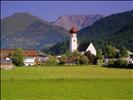

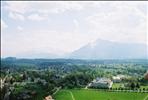

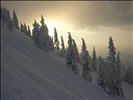



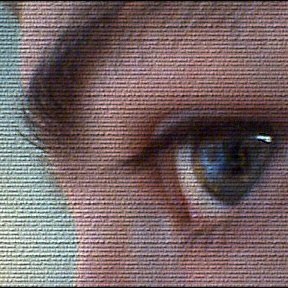

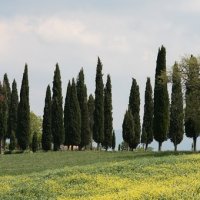


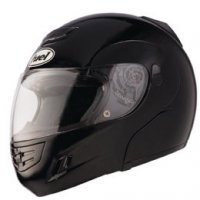






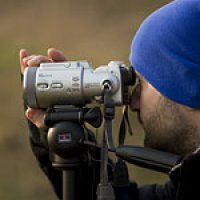


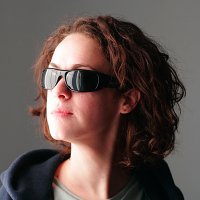



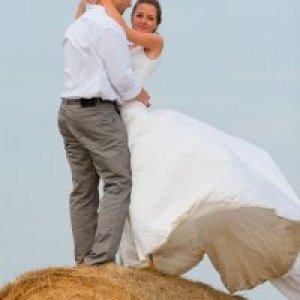












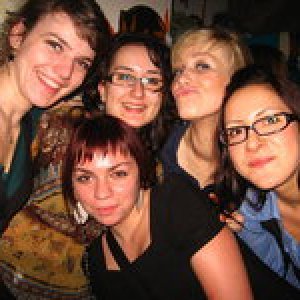
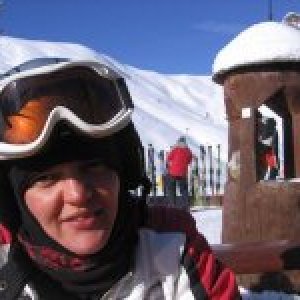
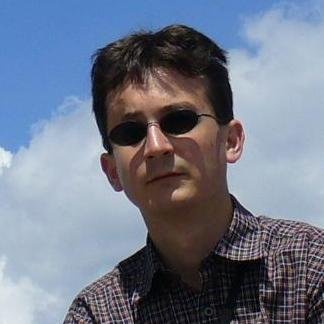
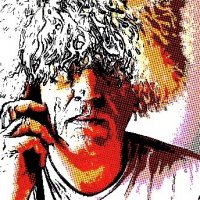



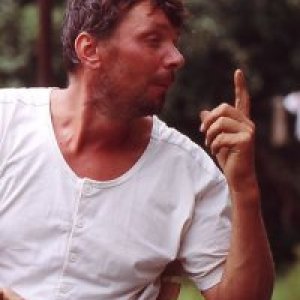


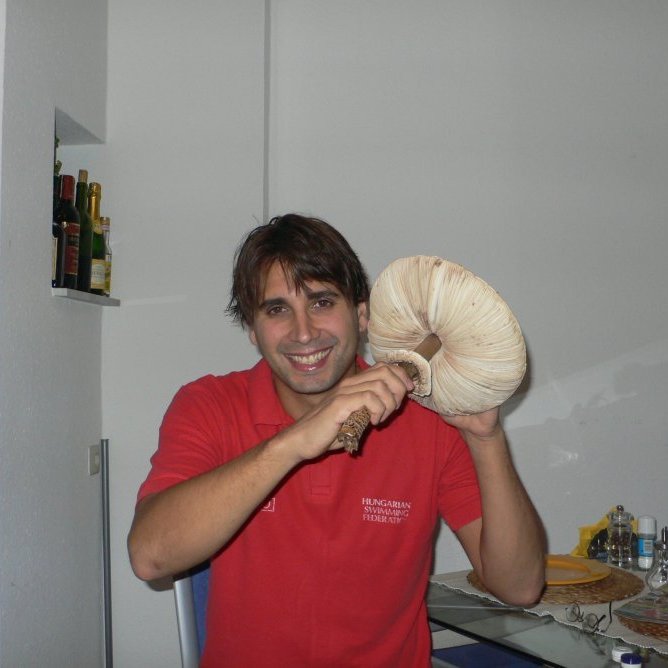


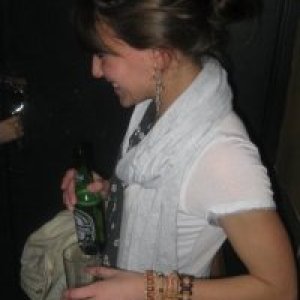










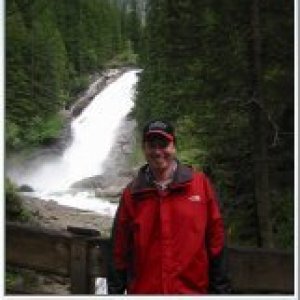






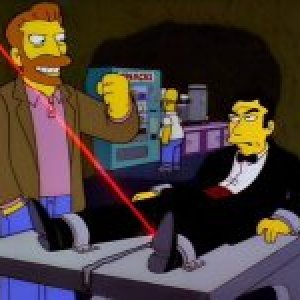

.jpg)


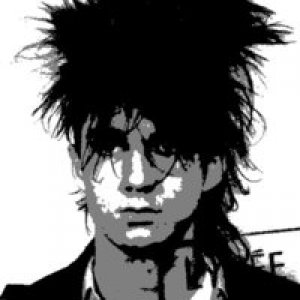
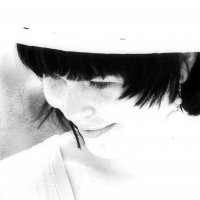
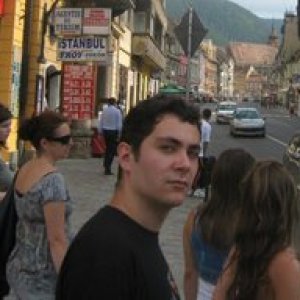


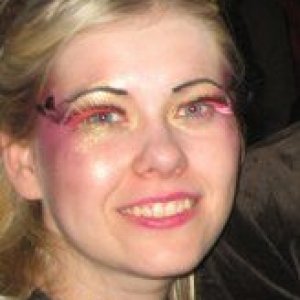
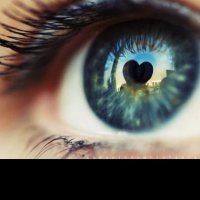





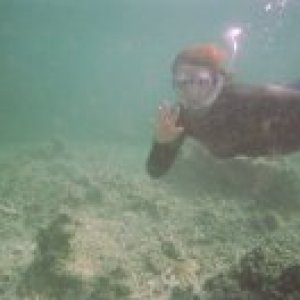


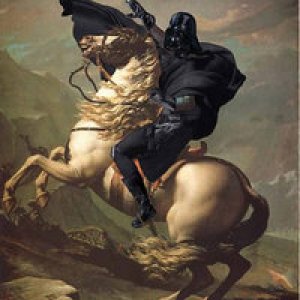


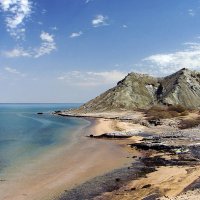






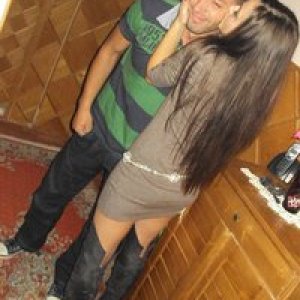

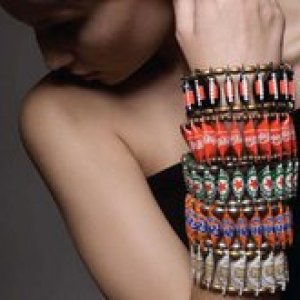

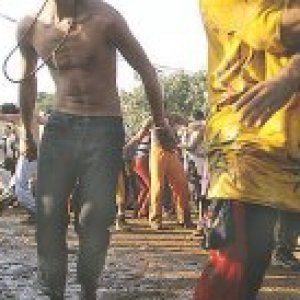










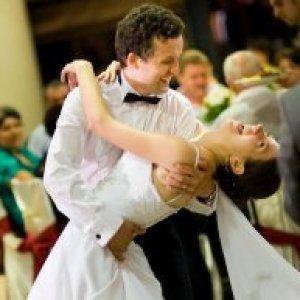







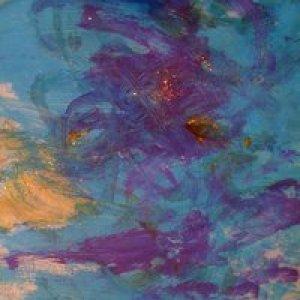
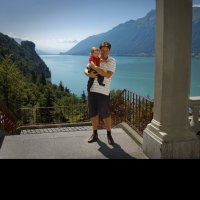














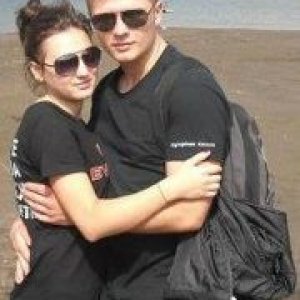
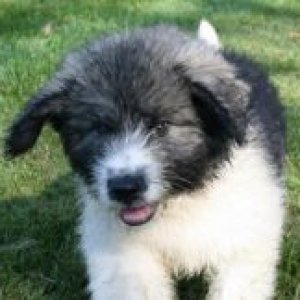







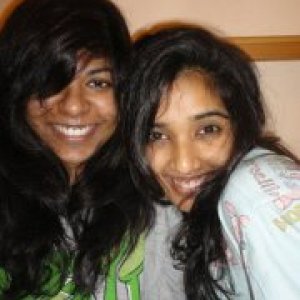





















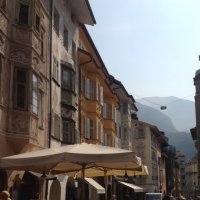

















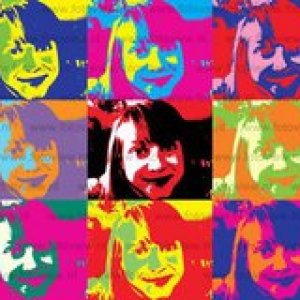





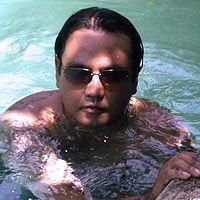





















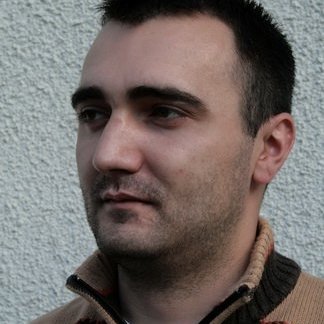




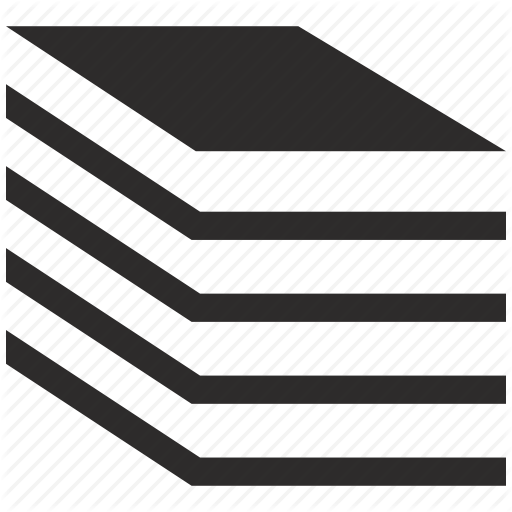

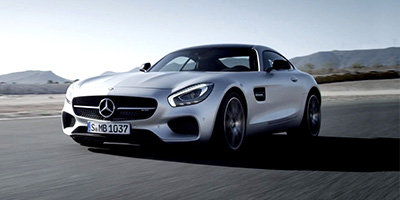
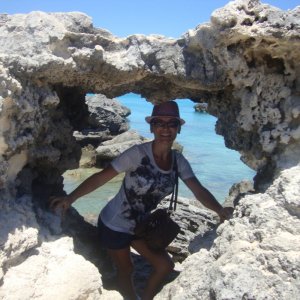
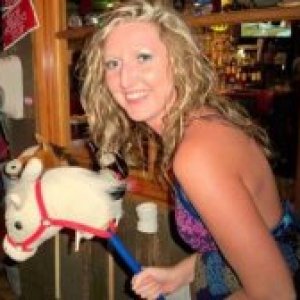


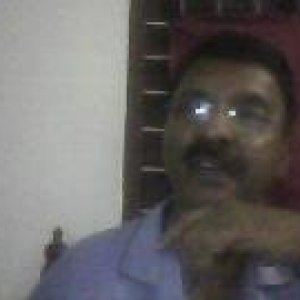

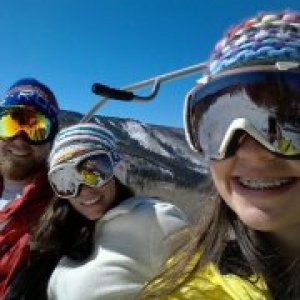


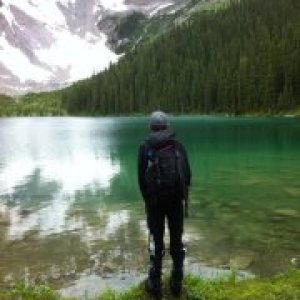










I liked
Nature, sceneries, (mostly) modest prices, WienI disliked
The Austrian habit of pushing German even though the conversation is in another language and the Austrian speaker has well enough words in vocabulary to say the same in the language spoken.